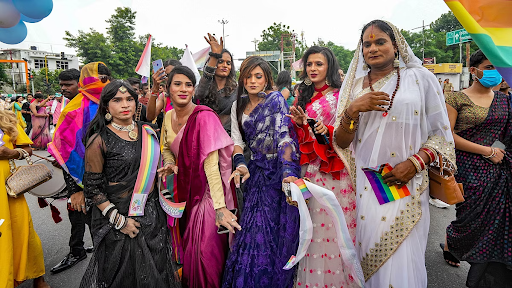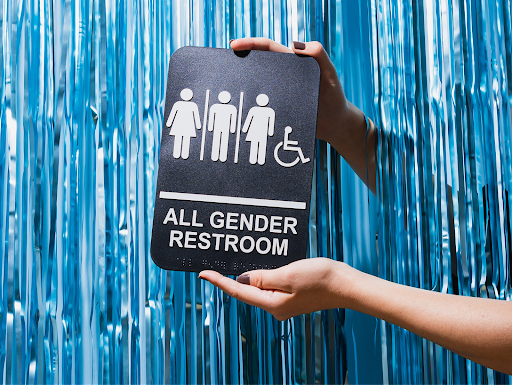Bridging The Gap: Social Norms and Washrooms
The Supreme Court’s decision to decriminalize consensual gay sex and revoke sections of Section 377 in the Indian Penal Code was celebrated by the LGBTQA+ community. However, its impact on India’s transgender community, one of the most marginalized groups, is a matter of debate. Despite gaining recognition as a third gender four years ago, the community still faces a significant challenge: access to safe and sanitary toilets. Although the government allowed transgender individuals to use restrooms for both men and women in public and community toilets in 2017, activists and transgender individuals argue that this is insufficient. There is a dilemma for the transgender community when it comes to restrooms and other public spaces. When transgender people use facilities that don’t align with their gender identity, they may face discrimination, harassment, or discomfort. Even though institutions are gradually recognizing the need for gender-neutral or transgender-friendly spaces, the fear of encountering hostile policies or unwelcoming environments remains a major concern. A dilemma like this reflects broader societal concerns about gender identity and acceptance of people of all genders
THE DICHOTOMY OF PUBLIC WASHROOMS
The practical experience of using public bathrooms poses numerous challenges for transgender individuals, starting with the issue of ‘passing’ as the gender they identify with. On an institutional level, workplaces in metropolitan cities have become more transgender-friendly, but awareness in schools, colleges, and rural cities has been limited. Often, transgender individuals believe that their struggle ends when they achieve their desired appearance. The process of updating one’s legal documents to reflect one’s gender can be time-consuming. There is a slow movement toward building gender-neutral or transgender-exclusive restrooms, but the fear of hostile bathroom policies in public spaces remains.
For the hijra community, once revered in history but now living on the fringes of society, using public or community restrooms exposes them to further persecution. Given that sex work and dancing in bars remain their primary sources of livelihood, even thinking about sex reassignment surgery or hormone replacement therapy seems impractical. Consequently, ‘passing’ becomes an even more serious challenge for them.
WHY DO TRANSGENDERS NEED SEPARATE WASHROOMS?
This highlights a concerning aspect of using public restrooms — the lack of safety, which becomes more pronounced in commercial areas of the city. Situations like that of Reddy, a transgender individual with a Master’s degree in Social Work, recalls being followed by a group of men inside a Kurla public toilet who assumed she was there to offer sexual services due to her belonging to the hijra community, brings out the general fear of safety concerns. While some state governments have recognized the dangers faced by transgender individuals in public toilets and constructed separate restrooms, this doesn’t guarantee safe access for a community that has long been ostracized for not conforming to gender binaries. The transgender community’s isolation from mainstream society has led to governmental neglect and societal exclusion.
However, the solution is not as simple as providing separate restrooms for transgender individuals. There is a need for cultural change and acceptance, asserting that building separate bathrooms implies exclusion. Bathroom violence is a real issue that should be addressed by educating people on how to behave with transgender individuals.
Using a restroom exclusively for transgender people could also force individuals to disclose their transgender identity, a prospect not all may be comfortable with. Additionally, the difficulty in finding gender-neutral restrooms or concerns about ‘passing’ limits the community’s social outings. Suppressing the urge to use the restroom can lead to health issues such as urinary tract infections or prolonged use of sanitary pads.
The concerns of some cisgender individuals about transgender individuals using public restrooms can turn into paranoia due to the law inadvertently favouring the male-female dichotomy. The law’s perceived weakness in protecting against sexual offences has led to the stigma associated with transgender individuals, creating an unjustifiable fear. Despite the challenges, some institutes in India have embraced gender-neutral restrooms, while others are gradually working towards accommodating transgender individuals. In workplaces, gender-neutral restrooms are rare but not unheard of.

CONCLUSION
These responses underscore the complexity of the issue, with no one-size-fits-all solution. Changing a structure takes time, but in the interim, having gender-neutral bathrooms can make the transgender population feel safer, even if it means causing some discomfort to the conventional norms. Laws can serve as corrective measures against actions, not as perpetuations of systemic transphobia. Addressing the dilemma involves fostering education, promoting inclusivity, and advocating for policies that recognize and respect the rights and dignity of transgender individuals. As societal understanding and acceptance continue to grow, more inclusive practices and spaces will likely emerge, reducing the challenges faced by the transgender community in public settings
Author



1 thought on “Bridging The Gap: Social Norms and Washrooms”
Nice post